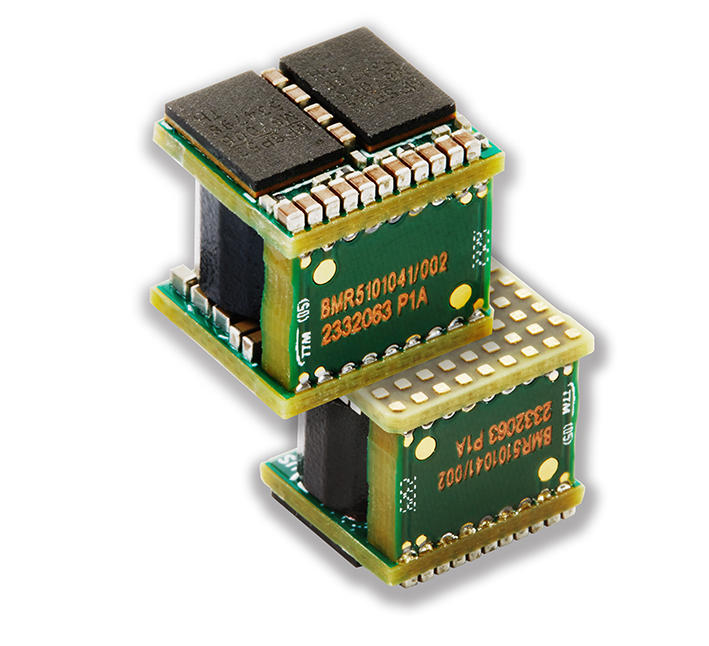New 2-phase power stage improves transient response and efficiency

We are introducing an upgraded version of its BMR510 2-phase integrated power stage module. The new BMR5101041/002 variant not only improves efficiency and increases peak current from 140 A to 160 A but also includes 528 µF of onboard output capacitance, significantly enhancing transient response. This onboard capacitance reduces the need for customers to add external components, freeing up valuable board space and simplifying power design.
The module provides a continuous output current of 80 A with an adjustable output voltage ranging from 0.5 to 1.8 V, addressing the growing power demands of advanced CPUs, GPUs, IPUs, FPGAs, and ASICs in high-performance applications such as AI.
Compact yet powerful, the BMR5101041/002 utilizes advanced magnetic core materials to achieve high inductance while operating at lower switching frequencies, minimizing switching losses. These optimizations result in impressive total efficiency, reaching up to 93% at light loads and 87.5% at full load.
Reliability is also a major feature of this upgraded BMR510 variant. With top-side cooling and power stages mounted on the upper side, it achieves excellent thermal performance and ensures consistent operation even in challenging conditions. The use of smart power stages with a 5V VCC, preferred by many power designers for its widespread availability, further enhances the module’s versatility.
The module operates within an input voltage range of 4.5 to 15 V and features a compact overall footprint of just 0.9 cm² (0.14 in²). Whilst the addition of onboard capacitance has slightly increased the module’s profile to 9.5 mm, this enhancement reduces the need for external components, optimizing board space and ensuring the module remains well-suited for space-constrained layouts.
Termination options include Land Grid Array (LGA) or solder bumps, allowing flexible integration into diverse designs. Additionally, the halogen-free module incorporates essential safeguards, such as over-current and over-temperature protection, along with tri-state Pulse Width Modulation (PWM) inputs. Designers benefit from integrated temperature and current monitoring for each phase and the capability to parallel multiple units for increased power delivery, enabling efficient and scalable voltage regulator module (VRM) performance.
